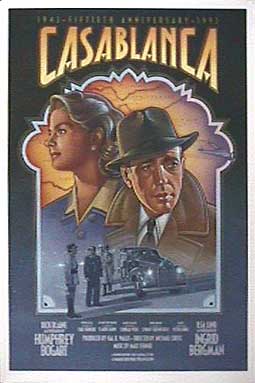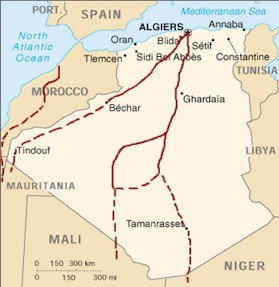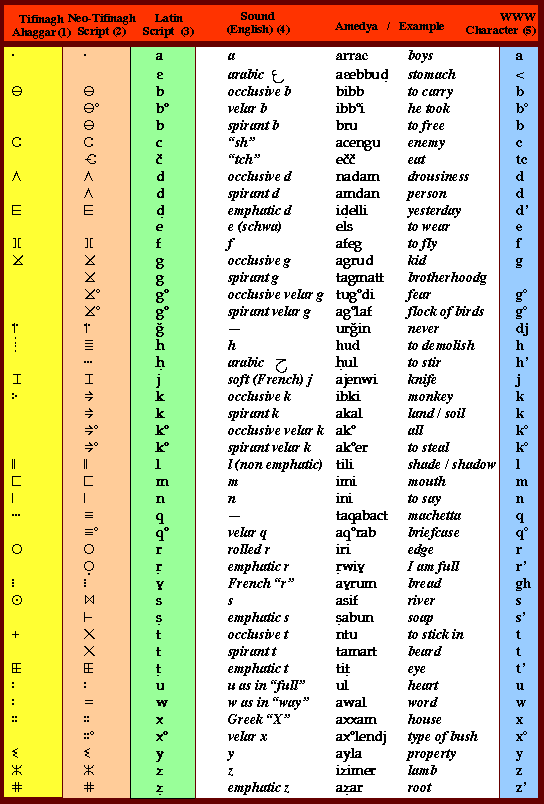| Al-Maghreb Al-AqsaThe travel narrative is the most
accommodating of genres – if it is a genre. It can accommodate almost every mode of
style, from the epic to the textbook ... Those who make journeys and write them up can
stuff just about anything they happen to know – history, folklore, literary
criticism, architecture, art, biography, anthropology, natural history, politics, even
gastronomy – into the commodious duffel bag of the travel book; and we, the readers,
usually follow along gullibly, swallowing all this lore, in the childish hope of
eventually finding out where the road goes and what happens along it or beside it.
Larry McMurtry.
Casablanca
It is World
War II in Casablanca. Cynically neutral Rick Blaine, former American and former freedom
fighter, runs a speakeasy in town. With the fall of France, Gestapo Major Heinrich
Strasser arrives in Casablanca, and the sycophantic Vichy police chief Captain Renault
does what he can to please his new master, including detaining Czech underground fighter
Victor Laszlo. The Moroccans in the movie are faceless, the story could have been placed
in Sarajevo without too much editing. Much to Rick's surprise and bitterness, his one time
love Ilsa, who ran away from him in Paris, is now with Laszlo; he agrees to help her
escape with her lover ... Renault is immediately suspicious, and stops by to interrogate
Rick. ‘What are you doing here?’ ‘I came to Casablanca for the
waters.’ ‘What waters? We’re in the middle of a desert!’ ‘I was
misinformed’ ... In the closing scene at Casablanca airport, Rick (Humphrey Bogart)
shoots Strasser (Conrad Veidt) who is calling for help to stop the aircraft in which Ilsa
(Ingrid Bergman) and Laszlo (Paul Heinreid) are about to fly off. A van-load of gendarmes
soon arrives at full pelt, but Renault (Claude Rains), the honneur of France
finally getting the better of him, calmly orders, ‘Major Strasser has been shot.
Round up the usual suspects.’ A classic, a cliché.

Once again, I am waiting at a station in the middle of the night; this
time, it is outside the Mohammed V Airport at Casablanca. The runways in the movie must
have been on a Burbank set, for in reality there is a good hour on board a clanking
carriage between the neon of the terminals and the dim lights of town. Both the bogies
which make up this airport train are dark, and moonlight bathes the gentle contours of
sand hills outside, here some trees, there a tangle of bidonvilles. Apart from me,
there are a couple of chain-smoking young men – airport workers returning home --
stretched out on the seats. None of the other scattered passengers of my near-empty Royal
Air Maroc flight from London seem to have bothered waiting for this last train.
The station, when it finally comes, is dark too. The train stops,
suddenly there are swinging lamps and shouts in the night. In the confusion, I barely have
the time to get off before the clanking train lumbers away. I soon find out this is
Casa-Voyageurs, a satellite station four miles east of town, and that I should have waited
for Casa-Port, where the hotels are.
Outside, in the dimly lit station square, there is still a little
bustle left. As I step out, a large jalopy drives up and a burly man in skullcap and
djellaba pokes his head out. Taxi? I get in, but almost before I have closed the door, a
smaller black-and-yellow cab races across the station square and rams into the door,
almost taking my arm off in the process. The two drivers leap out. It seems that the one I
was about to patronize was a moonlighter, and not a proper taxi, and that the other cab
had waited in the ranks for hours for a fare ... Leaving them to their altercation, I walk
away and get into a minibus to Port.
I am in Morocco to see, and perhaps cross, the Western Sahara. Throughout
history, there have been but a handful of land routes connecting the Mediterranean coast
to western Africa. In the east, there is the Route du Hoggar, which runs almost straight
south from Algiers, passing between the two Grand Ergs, turning towards the Hoggar
Mountains and Tamanrasset beyond them them, leading into Niger. The next crossing –
historically the Route du Tenezdrouft -- is 500 kms to the west: via Reggane and Borj
Mukhtar into Mali. Another 1000 kms and you have the Route du Mauritanie connecting Beni
Ounif to Tindouf and leading to Mauritania. These routes are hardscrabble at the best of
times – long unpaved stretches, lack of water, sandstorms and alleged Tuareg
banditry; with the political turmoil in Algeria and gruesome media reports of violence
against foreigners, they prove to be easy to postpone for future trips. That leaves the
Coastal Route, from Marrakech over the Atlas towards Ouarzazate, skirting the western
flank of the desert, along Dakhla into Noahdhibou and then south to Senegal. This is a
fine route that can be followed to see some desert scenery and perhaps technically claim a
Sahara crossing; the only small matter is that of land mines.

In 1974, Spain decided to abandon its Western Sahara territory consisting
of the provinces of Saguia al-Hamra and Rio de Oro, partitioning it between Morocco and
Mauritania. With active encouragement from king Hassan II, 350000 Moroccan civilians
walked in as part of the notorious Green March into Sahara. In 1979, Morocco annexed the
Mauritanian part of the Western Sahara. The Popular Front for the Liberation of Saguia
Al-Hamra and Rio de Oro (Polisario), claiming to represent the desires of the indigenous
tribes for independence, had been getting radicalized under the lingering Spanish rule.
Training its sights on the Moroccans as the ‘new colonizers’, the Polisario ran
a guerrilla warfare of sorts for more than a decade, mining all roads into Western Sahara,
until their backers Algeria and Libya lost interest and reached separate ententes
with Rabat. The UN stepped in with a cease-fire that has held for most of the 90s, but it
is still difficult to cross from Morocco into Western Sahara and Mauritania. Moroccans
issue travel permits in Dakhla, and once a month the army escorts civilian convoys across
the minefields to Noahdhibou. My plan is to drive down the Sahara-facing slope of the
Atlas (the anti-Atlas), and then hook up with one of these convoys at Dakhla. With
relations between Morocco and Mauritania still not-quite convivial, you can apparently
only go within a couple of miles of the border with the Moroccan Army;
then, you have to cross over some sort of no-man’s land to the Mauritanian side, and
seek the help of the
authorities there to guide you across the rest of the minefields.
The garden-variety anti-personnel mines that are littered in
parts of the south-western Sahara will blow off your legs and could kill you if you step
on one, but are fairly safe to drive over: you could get away with no more than a ruined
tire. There are some meaner, larger, anti-vehicle mines. I read a 1970s account of someone
driving his Unimog over a powerful mine near Nouadhibou. The heavy vehicle was completely
destroyed, but the occupants lived. Apparently, every year, a few Sahara travelers set off
mines; while the easiest way to avoid setting off a mine is to avoid known minefields
altogether, the next best is to hire someone as guide, in my case the Moroccan Army.
Where are the mines? Starting from the west, the lateral border
between Morocco and Mauritania is mined, though by now everyone knows the risks of leaving
the piste or mis-calibrating the GPS when crossing south. The first Mauritanian
checkpoint, they say, has a mass of tracks and there are no warning signs -- in 1998 a
Land Rover apparently hit a mine just a couple of meters from existing vehicle tracks with
one fatality. There are certainly mines alongside the Laayoune - Bir Mogrein road leading
to the northwestern corner of Mauritania; a truck from the Paris-Dakar rally caught one a
couple of years ago. Elsewhere in Mauritania, areas east and south of Ouadane are also
said to be mined; there are said to be mines north of the crater near the El Beyyid well
and rock paintings. There are also mines between Algeria and Morocco in the Hammada du
Drâa region between Tindouf and Bechar, though no regular trails cross this area, to
protect access to the Polisario refugee camps in the Hammada. Mali is thought to be
mine-free, as is Algeria. In Niger, it was reported in 1997 that Tuareg rebels were laying
mines in the Djado Kaouar region.
I step
out in the crisp winter Casablanca morning, the roads not yet loud with carts and petit-taxis.
I’m on my way to see the Hassan II mosque. In 1195, the Almohad sultan Yakub
Al-Mansur embarked on building the largest minaret in the world. It was intended to be 60
metres high and 20 metres wide at the base, but was abandoned after the Sultan’s
death, having reached some two-thirds its intended size. This is called La Tour Hassan,
and it still stands in Rabat, a crumbling testimony to a long-dead Moor’s grand
plans. Eight centuries later, the present king Hassan II (1) commissioned another project to build a grand minaret.
Construction was started in 1987 and completed in 1993, at the cost of nearly a billion
dollars. It is a people’s monument – a special ‘mosque tax’ was levied
on all Moroccans to finance the project – and can hold 100,000 worshippers during namaaz.
The roof of the central hall can swing open, to reveal the heavens to the assembly. The
minaret, at 200-plus meters, is the tallest in the world; at night, a green laser light
points out the direction to Mecca. There is some magnificent Gueliz tile-work on the walls
of the mosque in a huge non-repeating pattern, but other than that the effect is somewhat
akin to a Walt Disney movie set of the Arabian Nights. The mosque occupies a large acreage
right on the water’s edge along the Atlantic, but there is not a single tree on the
grounds – the entire plot has been overlaid with beige stone, and looks like a
giant hotel lobby, not a blade of grass peeks out. As the sun climbs, I wander
around on this rapidly heating floor, the sun glittering off the polished tiles, and think
of the understated majesty of the Mughal domes in India, at peace with themselves in their
cool gardens.

Berbers & Moors
Later in
the day, I go to the rental agency at Place des Nations Unies to collect the Mitsubishi
4x4 that will bear me south. It is possible to cross the Sahara without 4-wheel drive, but
once you come into the sand, it is better to have one. A good 4x4 is able to pull one
through most cases without one having to resort to digging; in most cases, if you get
stuck, you can drag yourself out, centimeter by centimeter, with the low 4x4 gear. For
dealing with harder situations, the vehicle comes with a winch, which can be used with an
anchor buried in the sand to help in extraction. Finally, if all else fails, there are
sand ladders and spades -- you dig into the sand and place sand ladders under the wheels
of your vehicle to get a hard surface to drive on.
The streets are full, and while the agency downs its shutters for
namaaz I stand and watch a river of people flow by.
If India can be thought of as having an Aryan north and Dravidian
south, the simple way to think of ethnicity in Morocco is in terms of an Arab north and
Berber south.
In prehistory (around 15000 BC), a mysterious tribe of Neolithic
people appeared in the Capsa (Qafsah) region of Tunisia. The indigenous inhabitants of the
southern Mediterranean coast intermingled with the invaders in a process that brought
Neolithic ways of life to North Africa. The Berbers of Morocco are the descendants of this
Capsian culture.
For 14000 years, they slowly developed a nomadic, pastoral
culture with distinct tribes, migration patterns, languages -- gradually expanding
southwards and pushing the Negroid peoples to sub-Sahara.
As Carthage, Greece, Rome and Byzantium rose in the northern and
eastern Mediterranean, the Berbers were successively colonized or became tributaries of
the dominant culture. In 622 A.D., a Qurayshi trader claiming receipt of divine revelation
in distant Arabia fled from Mecca to Medina to protect his flock from the wrath of
‘idolaters’ -- Islam was born. By 640, the green pennant flew over Egypt; by
669, over Tunisia; by 710, the armies of the Arab Musa bin Nusayr had allied with,
converted or defeated all the Berber peoples of Morocco. While all the Berbers had been
converted to Sunni Islam by the 11th century, and though there were legions of
Berber troops in the Arab forces, the tribes of the Moroccan interior resisted Arab rule
whenever possible; and, at various times, were able to maintain autonomous states, the
most recent of which was established in the Rif region under French Colonial rule. So the
north was gradually filled with Arabized Berbers who adopted the language, dress and
culture of Arabia. The south – especially the mountainous regions of the Rif, Middle
Atlas, High Atlas and Anti Atlas regions – became a stronghold of those who resisted
Arabization.
Moroccan Berbers are divided into several tribes, which speak one
of three principle dialects of the Berber language -- Rifi of the Rif; Tamazight of the
Middle Atlas, the central High Atlas and the Sahara; and Tashilhit of the High Atlas and
the Anti Atlas. In Algeria there is one main Berber dialect, called Amazigh. Out in the
Sahara, a Berber language called Zénète is used. The sole remaining Berber language in
Tunisia, called Chelha, is dying out in our times. These dialects all belong to the
Hamito-Semitic family; the script is vaguely Punic. The Berbers call themselves the
Imazighen – "men of noble origin." There are about 10 million Berber
speakers (one third of the population) in Morocco.

While there are similarities between all the Berber groups, particular
lifestyles vary according to region. The basic Berber economy rests on a fine balance
between farming and breeding cattle. Every tribe depends heavily on domestic animals for
carrying heavy loads, milk and dairy products, meat, and hides or wool. Similarly, every
tribe also relies on seasonal agriculture for survival. Around populated areas, they bring
craftwork to markets. Weaving and pottery are the mainly done by women, whereas men
specialize in woodworking, metalworking, and, surprisingly, needlework
Ibn Khaldûn narrates how the Berbers got their name in his
monumental Kitab al-‘Ibar (Book of History). Ifriqus bin Qays bin Sayfi, of the royal
line of the Tubba`s of Yemen who ruled around the time of Moses, raided the province of
Ifriqiyya (the Arabic Africa was limited to modern Tunisia and Libya; south of
‘Misr’, provinces had their own names, such as Nubia, and were not considered
part of Ifriqiyya), and caused a great slaughter amongst the nomads. When he heard them
speak, he asked derisively what that barbarah noise was all about, and gave them
the name Barbar, which has remained with them since. Carthaginians list three indigenous
peoples – the Libyans, the Numidians and the Mauri, collectively called Barbarii --
around them. The term Mauri is also used by the Romans for the inhabitants of the
Roman province of Mauretania (western Algeria and northeastern Morocco.) The Roman
Mauretania is, of course, different from today’s Islamic Republic of Mauritania,
though the inhabitants of the latter are sometimes called maure (Moor) in French.
So the name ‘Mauri’ gave rise to the word Moor – and this
became a generic term used in Europe from the middle ages to describe not only Arab and
Berber in the Maghreb, but also Muslim and African in general. Shakespeare’s Othello
is negroid; while he is a great general and fearless fighter, he is also
‘thick-lipped’ and simple minded:
- Iago: The Moor is of a free and open nature,
- That thinks
men honest that but seem to be so,
- And
will as tenderly be led by the nose
- As
asses are.
In Shakespeare's time, the Moors had largely been driven out or
executed by the Inquisition. Since the Spanish were the demonized by the Elizabethans (the
Spanish Armada sailed in 1588), the Moors were seen to be earlier victims of a common
enemy – Shakespeare’s treatment of Othello as a sort of fish out of his racial
water is typical of nostalgic regret admixed with sentimental stereotyping with which
Elizabethan society regarded the Moors.
While
Berber groups such as the Kabyles, Shawiya, Tuareg, are nominally Muslim, their observance
of Islamic law is generally lax. Interestingly, the concept of baraka, or holiness,
is highly developed amongst the Berbers. The Berbers believe that many people are endowed
with baraka, of which the holiest are the Sharifs, the direct descendants of
Mohammed. The marabouts form another class of holy men. Among some Berbers, the
Tuaregs in particular, the marabouts are considered to be different from ordinary
men -they are believed to possess the powers of protection and healing, even after death,
and their shrines are carefully tended. It is also interesting, in view of the general
acceptance of Islam, that almost all Berbers -- especially the Tuareg, prefer monogamous
marriages.
In most of the Maghreb, Berber
identity is considered to be a negative, largely because the pastoral Berber societies are
less developed than what is seen in the cities. Almost all city-dwellers see themselves as
Arabs -- Marrakech remains the only city with any Berber identity.
|